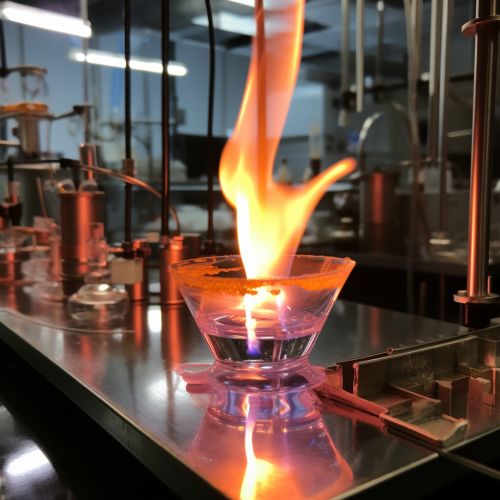Zone melting
Introduction
Zone melting is a group of methods in materials science where a narrow region of a crystal is melted, and this molten zone is moved along the crystal. The technique relies on the principle that impurities will be pushed along by the molten zone, allowing for the purification of the substance or the introduction of dopants at specific areas.
History
The concept of zone melting was first introduced by the German scientist William G. Pfann in 1952. Pfann was working at Bell Telephone Laboratories at the time, and his work was primarily focused on the purification of germanium for use in semiconductors. The technique has since been expanded and refined, and is now used in a variety of applications, from the production of silicon for solar panels to the creation of high-purity metals and alloys.


Principles
Zone melting is based on the principle of selective solubility. When a solid is melted, impurities in the solid will tend to concentrate in the liquid phase. By creating a small molten zone and slowly moving it along the length of a crystal, these impurities can be pushed along and eventually removed from the crystal.
The process begins by placing a rod of the material to be purified into a furnace. The furnace is then heated to a temperature just above the melting point of the material. A small section of the rod is melted, creating a molten zone. This zone is then slowly moved along the length of the rod, either by moving the heat source or by moving the rod itself.
As the molten zone moves, impurities in the solid material are dissolved into the liquid. When the molten zone passes, the material re-solidifies, leaving the impurities in the liquid phase. By the time the molten zone reaches the end of the rod, the impurities have been concentrated in the last bit of liquid to solidify.
Applications
Zone melting has a wide range of applications in materials science and engineering. It is used in the production of high-purity metals and alloys, the growth of single crystals for use in semiconductors, and the production of silicon for solar panels.
In the field of semiconductor production, zone melting is used to create single crystals of silicon and germanium. These single crystals are essential for the production of high-quality semiconductor devices. The technique allows for the precise control of dopant concentration, which is crucial for the performance of these devices.
In the production of solar panels, zone melting is used to create high-purity silicon. The process allows for the removal of impurities that can reduce the efficiency of the solar cells. In addition, the technique can be used to create single crystals of silicon, which have superior electrical properties compared to polycrystalline silicon.
Advantages and Disadvantages
Like any other technique, zone melting has its advantages and disadvantages. One of the main advantages of zone melting is that it allows for the production of high-purity materials. The technique can remove impurities to a level that is difficult to achieve with other methods.
Another advantage is the ability to control the concentration of dopants in semiconductors. By adjusting the speed of the molten zone, it is possible to create a gradient of dopant concentration, which can be useful in the production of certain types of semiconductor devices.
However, zone melting also has its disadvantages. The process is slow and energy-intensive, making it unsuitable for large-scale production. In addition, the technique requires a high level of control over the temperature and speed of the molten zone, which can be difficult to achieve in practice.
